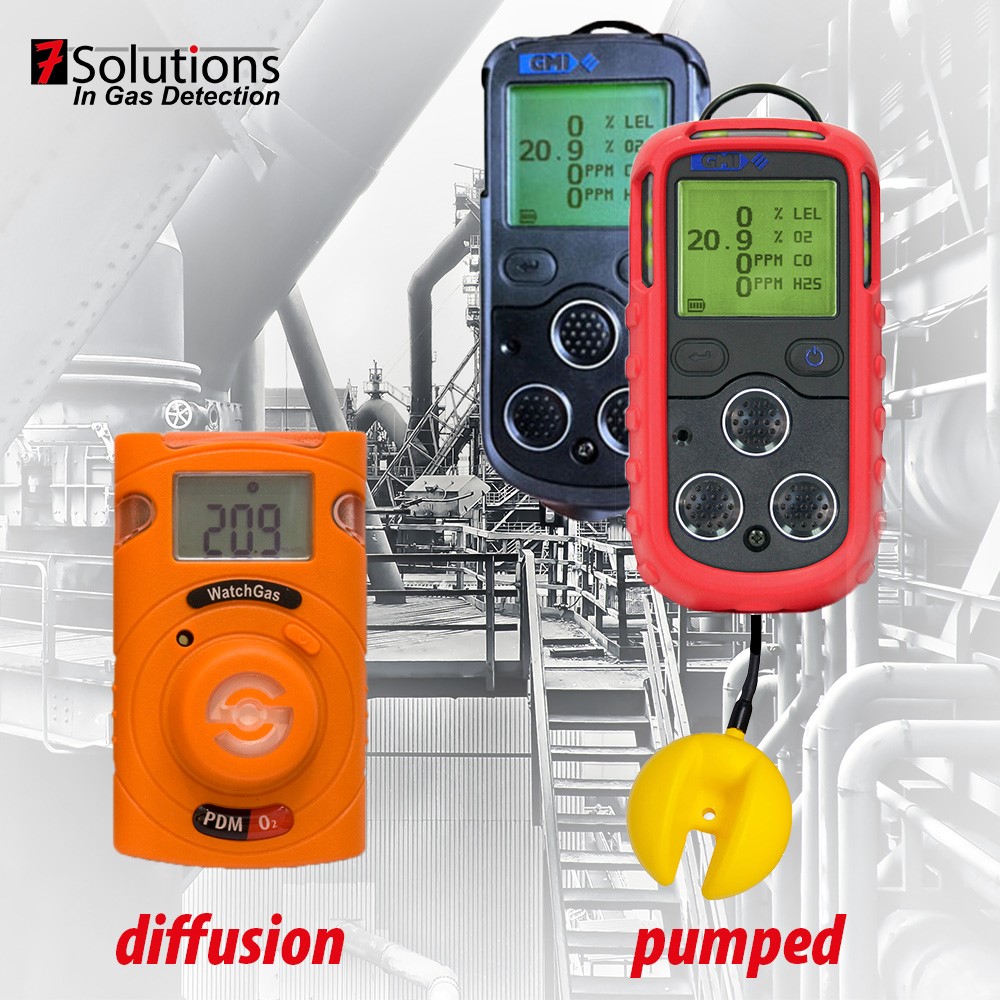My name is Lars, 35 years old and I have over 10 years of experience in the wonderful world of gas detection, with pumped ánd diffusion devices.
My passion is technology and helping people. This is why I believe I have the best job in the world as the Sales Manager Belgium at 7Solutions in Gas Detection. Getting to know people, advising people and at the same time getting a glimpse of the various industrial processes and techniques is enormously fascinating and challenging. One of the questions that keeps coming back:
When should we use a pumped instrument and when can we use a diffuse instrument? I will break this down for you in this blog. Do not hesitate to contact us for additional questions and/or information.
The title of this article already mentions it and several articles have already been shared about the topic, but we still notice that there are lots of questions about this. Sometimes it is not clear what the real differences between these devices are and what instrument is best suited for your application. The starting point of this article is always to guarantee the safety of users and the environment, considering the technical limits of the current gas detection devices on the market.
Diffusion gas detection device
A diffusion gas detection device works, as the name suggests, on the diffusion principle. The sensor is exposed to the ambient air (often protected by a dust / water filter) and will measure the target gas by means of the diffusion principle. Diffusion means proportional spread of molecules over the available space (from high concentration to low concentration). This also means that a diffusion gas detection device is only able to measure the concentration of the target gas at the location where the device is located. Since there is no forced flow of the gas to be measured, this device is not suitable for taking measurements remotely. A practical example of this type of device are the single gas monitors for, for example, O2 which can be worn on the chest.
Applications: Personal safety of employees in risk areas. Stationary gas detection in e.g. storage and transfer applications and process control.
Pumped gas detection device
Technical difference: A pumped instrument is equipped with a built-in sampling pump. Because of this, this type actively draws a gas sample so that a faster response can often be generated, and a sampling hose can be connected (depending on the manufacturer, this can be up to 50 meters). In practice, this means that you can take a measurement from a safe distance so you have an idea of which gases will be present in which concentration before you are exposed to this environment. This allows you to make an appropriate risk analysis and make the right strategy and PPE choices based on the measurement results. By positioning the measuring hose correctly, you can also make a correct measurement at different heights to chart all risks.
Applications: Release of confined spaces (such as tanks, sewers, crawl basements, spaces that are hardly ever entered, etc.) suctioning samples (e.g. biogas analysis, wing tank entry, etc.)
Interested in more about this topic or anything else we can help you with? Please get in touch!

